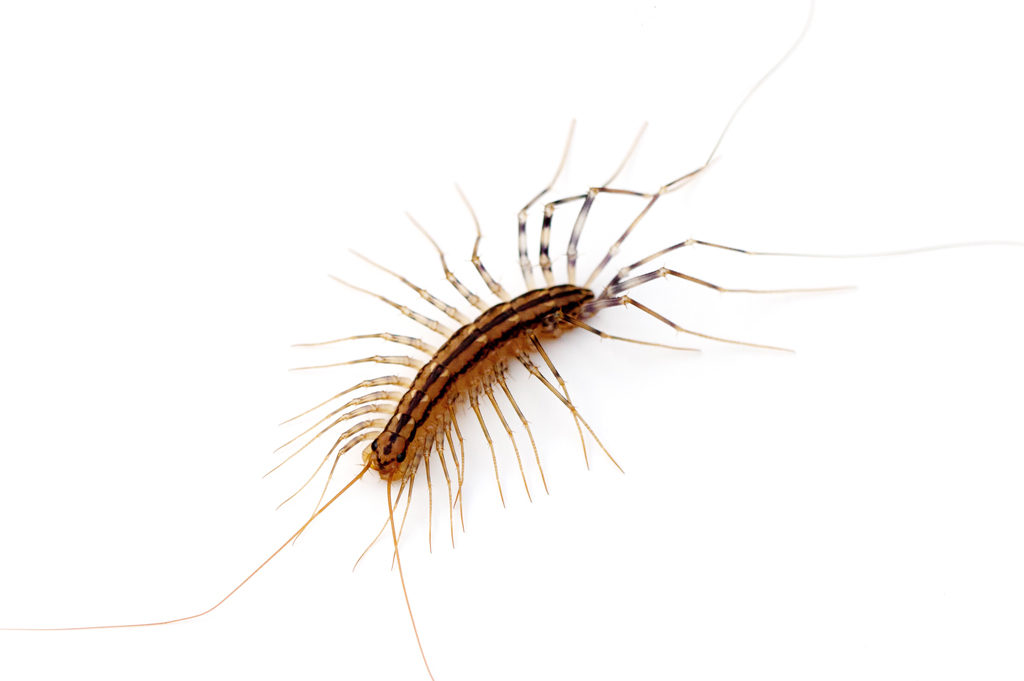Centipedes: Quick Facts What does a typical house centipede look like? What do they eat? Where do they live? Are centipedes dangerous? How can I prevent a centipede infestation? How do I get rid of centipedes?

• Name “centipede" is a bit of a misnomer as they can have between 15 and 177 pairs of legs
• Centipedes ALWAYS have an odd number of pairs of legs
• The usual pest species is the common house centipede Scutigera colepptrata (Linnaeus)
• Grayish yellow with three dark longitudinal stripes
• Adult centipedes are about 1" to 1-1/2" long (25 to 38 mm)
• House centipedes have 15 pairs of long legs.
• The antennae and last pair of legs are longer than its body.
• They are carnivores and eat invertebrates like worms, spiders, crickets, beetles, cockroaches, flies, grasshoppers, ants, potato bugs.
• They will also eat other centipedes.
• Typically, centipedes are found in moist areas like rotting logs, under stones, in the trash, or piles of leaves and/or grass.
• When they are discovered in homes, centipedes are most often found in damp basements, crawl spaces, bathrooms, or potted plants.
• Generally, not. They are more generally considered nuisance pests as they do not pose any significant threat to health or property.
• However, they do have poison glands that can inject venom during a bite. Usually, they are not strong enough to pierce human skin, but it is possible. The bite and venom are comparable to a bee sting.
• Reduce areas of moisture in and around your home.
• Remove piles of grass clippings, leaves, logs, stones, and rocks.
• Store firewood on racks and not directly on the ground.
• Ensure proper ventilation of all attics, basement, and crawl spaces.
• Seal all cracks, gaps, and holes in your walls that may allow centipedes to enter your home.
• A single centipede may be sucked up in a vacuum cleaner.
• If you suspect an infestation, it is recommended that you contact a licensed pest control specialist. Please call DKS Pest Control at (724) 478-5344
